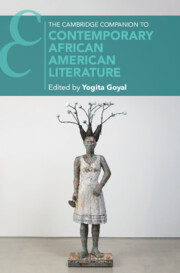291 results
Workflow and Outcome of Thrombectomy in Late Time Window. A Pooled Multicenter Analysis
-
- Journal:
- Canadian Journal of Neurological Sciences / Accepted manuscript
- Published online by Cambridge University Press:
- 19 April 2024, pp. 1-18
-
- Article
- Export citation
Responses of inbred mouse strains to infection with intestinal nematodes
-
- Journal:
- Journal of Helminthology / Volume 77 / Issue 2 / June 2003
- Published online by Cambridge University Press:
- 12 April 2024, pp. 119-124
-
- Article
- Export citation
Utility of Maximum Phonation Time in the Diagnosis of Spasmodic Dysphonia (Laryngeal Dystonia)
-
- Journal:
- The Journal of Laryngology & Otology / Accepted manuscript
- Published online by Cambridge University Press:
- 12 April 2024, pp. 1-20
-
- Article
- Export citation
Cost-Effectiveness of Late Endovascular Thrombectomy vs. Best Medical Management in a Clinical Trial Setting and Real-World Setting
-
- Journal:
- Canadian Journal of Neurological Sciences , First View
- Published online by Cambridge University Press:
- 26 February 2024, pp. 1-8
-
- Article
-
- You have access
- Open access
- HTML
- Export citation
Determinants of substance use among young people attending primary health centers in India
-
- Journal:
- Cambridge Prisms: Global Mental Health / Volume 11 / 2024
- Published online by Cambridge University Press:
- 12 February 2024, e23
-
- Article
-
- You have access
- Open access
- HTML
- Export citation
Descriptive Representation and Party Building: Evidence from Municipal Governments in Brazil
-
- Journal:
- American Political Science Review , First View
- Published online by Cambridge University Press:
- 22 December 2023, pp. 1-16
-
- Article
-
- You have access
- Open access
- HTML
- Export citation
Part II - African American Genres
-
- Book:
- The Cambridge Companion to Contemporary African American Literature
- Published online:
- 14 December 2023
- Print publication:
- 21 December 2023, pp 79-178
-
- Chapter
- Export citation
Part I - Histories of the Present
-
- Book:
- The Cambridge Companion to Contemporary African American Literature
- Published online:
- 14 December 2023
- Print publication:
- 21 December 2023, pp 29-78
-
- Chapter
- Export citation
Part III - Mapping New Identities and Geographies
-
- Book:
- The Cambridge Companion to Contemporary African American Literature
- Published online:
- 14 December 2023
- Print publication:
- 21 December 2023, pp 179-224
-
- Chapter
- Export citation
Part IV - Critical Approaches
-
- Book:
- The Cambridge Companion to Contemporary African American Literature
- Published online:
- 14 December 2023
- Print publication:
- 21 December 2023, pp 225-297
-
- Chapter
- Export citation
Further Reading
-
- Book:
- The Cambridge Companion to Contemporary African American Literature
- Published online:
- 14 December 2023
- Print publication:
- 21 December 2023, pp 298-305
-
- Chapter
- Export citation
Index
-
- Book:
- The Cambridge Companion to Contemporary African American Literature
- Published online:
- 14 December 2023
- Print publication:
- 21 December 2023, pp 306-310
-
- Chapter
- Export citation
Chronology
-
- Book:
- The Cambridge Companion to Contemporary African American Literature
- Published online:
- 14 December 2023
- Print publication:
- 21 December 2023, pp xiii-xxviii
-
- Chapter
- Export citation
Contents
-
- Book:
- The Cambridge Companion to Contemporary African American Literature
- Published online:
- 14 December 2023
- Print publication:
- 21 December 2023, pp v-vi
-
- Chapter
- Export citation
Copyright page
-
- Book:
- The Cambridge Companion to Contemporary African American Literature
- Published online:
- 14 December 2023
- Print publication:
- 21 December 2023, pp iv-iv
-
- Chapter
- Export citation
Introduction
-
-
- Book:
- The Cambridge Companion to Contemporary African American Literature
- Published online:
- 14 December 2023
- Print publication:
- 21 December 2023, pp 1-28
-
- Chapter
- Export citation
Acknowledgments
-
- Book:
- The Cambridge Companion to Contemporary African American Literature
- Published online:
- 14 December 2023
- Print publication:
- 21 December 2023, pp xi-xii
-
- Chapter
- Export citation
Contributors
-
- Book:
- The Cambridge Companion to Contemporary African American Literature
- Published online:
- 14 December 2023
- Print publication:
- 21 December 2023, pp vii-x
-
- Chapter
- Export citation

The Cambridge Companion to Contemporary African American Literature
-
- Published online:
- 14 December 2023
- Print publication:
- 21 December 2023
Representation from Below: How Women’s Grassroots Party Activism Promotes Equal Political Participation
-
- Journal:
- American Political Science Review , First View
- Published online by Cambridge University Press:
- 09 October 2023, pp. 1-16
-
- Article
-
- You have access
- Open access
- HTML
- Export citation



